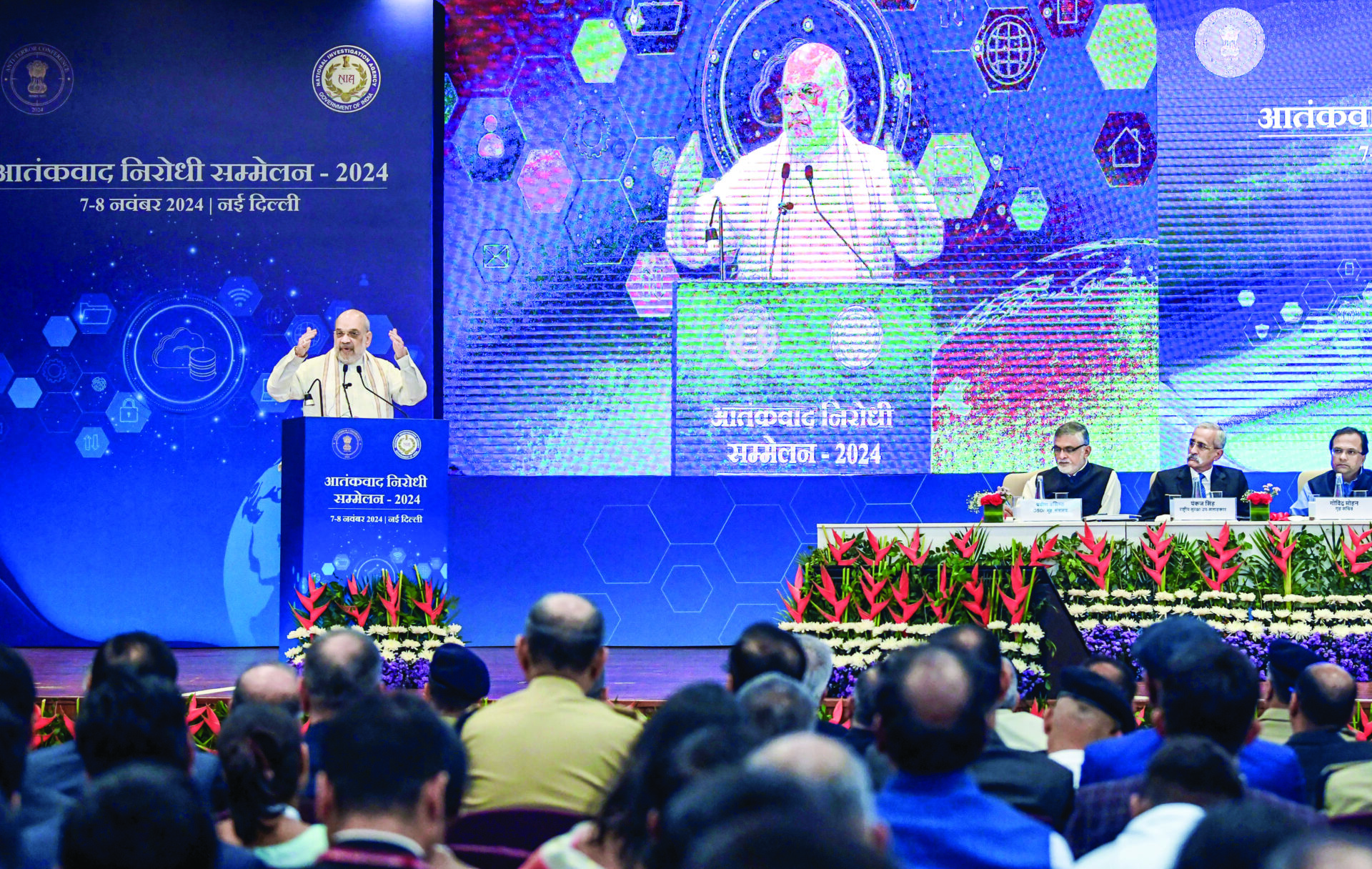New Delhi: The two-day annual Anti-Terror Conference 2024, organised by the National Investigation Agency (NIA) under the Ministry of Home Affairs, concluded on Friday with a strong emphasis on the need to bridge significant gaps in cooperation between central and state agencies in countering terrorism effectively.
The discussions, spread across five themed sessions, included representatives from various state governments as well as multiple central agencies, such as the Border Security Force (BSF), Narcotics Control Bureau (NCB), National Intelligence Grid (NATGRID), Financial Intelligence Unit (FIU), National Technical Research Organisation (NTRO), Indian Cyber Crime Coordination Centre (I4C), Ministry of Electronics and Information Technology (MeitY), Counter Terrorism and Counter Radicalization (CTCR) division, National Security Guard (NSG), Intelligence Bureau (IB), and the Research and Analysis Wing (R&AW).
Coordination—or the lack thereof—between central and state agencies emerged as a major area of concern, with a particular emphasis on the need for a standardised, cohesive approach to tackle terrorism.
The two-day brainstorming discussions, which saw inputs from Home Minister Amit Shah and Home Secretary Govind Mohan, highlighted this critical issue.
An official press release noted that the event saw participation from 39 heads of state police, Central Police Organisations (CPOs), Central Armed Police Forces (CAPFs), and over 150 delegates representing 29 state/Union Territory (UT) police forces and 31 central organisations. The conference, considered a key annual gathering, provided a platform to address shared challenges and strategies across agencies.
The conference emphasised the importance of enhanced alignment, particularly in areas such as data sharing, counter-terrorism (CT) strategies, cybercrime, and financial terrorism. The focus on establishing a “Whole of Government Approach” and shifting from a “need-to- know” to a “duty to share” culture signalled that, while some level of collaboration exists, the depth of integration and efficiency remains below desired levels.
Additionally, both Shah and Mohan called for capacity building, resource sharing, and the creation of unified frameworks, suggesting that previous fragmentation may have hindered comprehensive counter-terrorism efforts. The push for resource pooling and the unveiling of Standard Operating Procedures (SOPs) underscored the need for a synchronised, nationwide strategy to achieve effective counter-terrorism results.
Home Secretary Mohan urged states to send skilled officers to the NIA, highlighting that this would not only strengthen the agency but also enrich the investigative practices of officers when they return to their home states.
Shah’s emphasis on a coordinated strategic approach to counter terrorism served to underline the need for closer collaboration and improved coordination between agencies and state forces—areas that have, so far, faced challenges.
A lack of coordination between state and central agencies, as well as within central agencies themselves, is not a new issue. This disconnect, often compounded by limited information-sharing, is frequently attributed to professional one-upmanship among officials within these agencies.
While this topic is usually addressed behind closed doors, the open discussion and deliberation at the conference highlight the serious approach Shah and Mohan are taking to address these coordination challenges.
One of the main reasons behind the security
Anti-terror meet raises concerns on lack of inter-agency collaboration
इस शब्द का अर्थ जानिये
- Advertisement -

